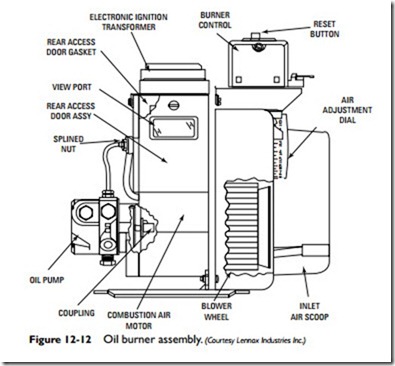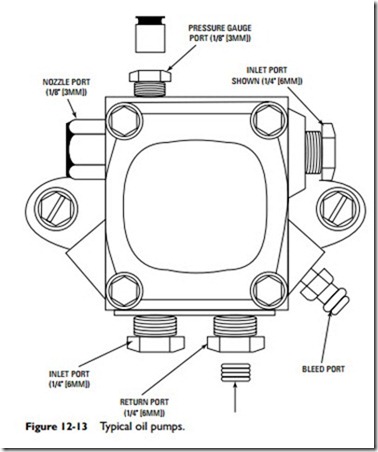Oil Burner Assembly
The oil burner assembly consists of the ignition transformer, cad cell, gun assembly, oil nozzle, and electrodes (Figure 12-12). The oil burner is a mechanical device used to combine fuel oil with the proper amount of air for combustion and deliver it to the point of ignition. Oil burners and burner assemblies are described in considerable detail in Chapter 1, “Oil Burners” of Volume 2.
The pressure-type oil burner is the one most commonly used in residential oil furnaces, hot-water, and space heating systems. A vaporizing oil burner is sometimes used in small residential furnaces.
One of the first improvements in oil burner technology after the oil crisis in the 1970s was the introduction of more burners with flame-retention heads. These efficient designs were followed by the even more efficient high-static oil burners.
Fuel Pump and Fuel Pump Motor
The fuel pump (Figure 12-13) draws oil from the storage tank and sends it to the gun assembly at pressures between 100 and 140 psi. The fuel pump is connected to the pump motor by the burner coupling. Both the fuel pump and the fuel pump motor are described in Chapter 1, “Oil Burners” in Volume 2.

